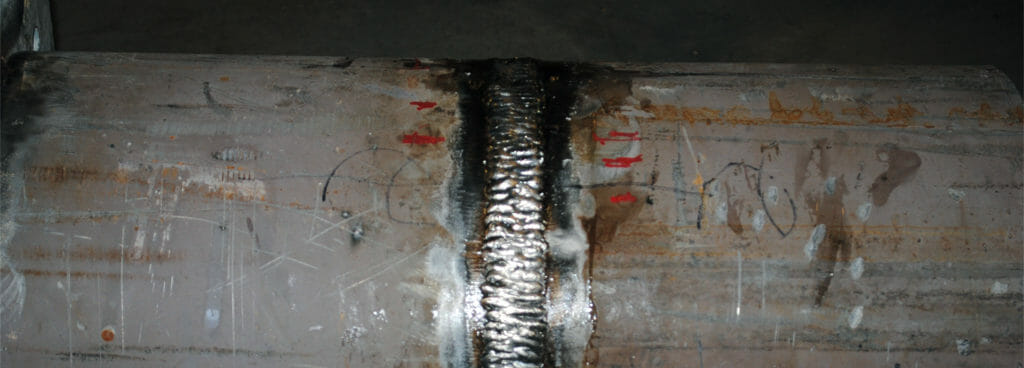Why Choose Professional Welding Inspection Madison for Your Projects
Why Choose Professional Welding Inspection Madison for Your Projects
Blog Article
How Effective Welding Evaluation Enhances Structural Integrity and Longevity
In the realm of construction and design, the significance of welding examination can not be overstated, as it plays a pivotal function in ensuring architectural integrity and expanding the life expectancy of tasks. Join the expedition of how effective welding examinations can change possible susceptabilities right into staminas, contributing to the enduring success of building and constructions.
Significance of Welding Examination
Making certain the architectural honesty and safety and security of bonded buildings requireds extensive welding evaluation processes. Welding evaluation serves as an essential safeguard in the construction and production sectors, where the stamina and sturdiness of joints substantially affect the total efficiency of frameworks.
In addition to safety and security, welding evaluation plays an essential function in high quality guarantee. Industry criteria and codes, such as those from the American Welding Society (AWS) or the International Organization for Standardization (ISO), require adherence to rigorous guidelines, highlighting the value of inspections in fulfilling these professional and legal responsibilities.
Key Assessment Strategies

Ultrasonic Examining (UT) utilizes high-frequency sound waves to find subsurface flaws, providing exact details about weld integrity without triggering any damage. Radiographic Evaluating (RT), including X-rays or gamma rays, gives a detailed photo of the weld's internal structure, exposing concealed flaws. Magnetic Fragment Examining (MPT) is an additional non-destructive approach, specifically reliable for detecting surface and near-surface suspensions in ferromagnetic materials.
Penetrant Testing (PT) includes the application of a liquid dye to reveal surface-breaking defects, offering a cost-effective and uncomplicated remedy for non-porous products. Each method has its certain applications, staminas, and limitations, and often a mix of approaches is utilized to achieve comprehensive examination outcomes. Mastery of these techniques enhances the integrity and toughness of welded structures, straightening with safety and security and performance expectations.
Identifying Common Issues

Porosity, characterized by gas pockets within the weld, reduces the weld's stamina and toughness. Splits, which can take place throughout or after welding, present substantial threats due to their possible to circulate under stress.
Incomplete fusion, where the weld steel stops working to bond totally with the base material, undermines the architectural stability, leading to weak joints. Slag additions occur when non-metallic products are entraped in the weld, jeopardizing its strength and top quality.
Recognizing these flaws through meticulous assessment techniques, such as visual exam, ultrasonic screening, or radiography, is important. Dealing with these issues makes certain weld high quality, ultimately sustaining the architectural integrity and safety and security of the developed environment.

Enhancing Structural Efficiency
Understanding the relevance of identifying typical weld issues naturally causes exploring techniques for boosting structural performance. The fundamental approach for enhancing efficiency requires employing sophisticated welding strategies and products that reduce flaw event. Utilizing top notch filler materials and guaranteeing appropriate warmth control can substantially decrease problems such as porosity and fracturing, thereby enhancing the weld's stability.
Integrating advanced welding innovations, such as laser welding and rubbing mix welding, more amplifies structural resilience. These techniques provide remarkable accuracy and lowered thermal distortion, straight impacting the resilience and stamina of the welded structures. Additionally, embracing automated welding systems can make sure constant and repeatable weld high quality, lessening human error.
Additionally, applying strenuous pre-weld and post-weld treatments is vital. Appropriate joint style, surface preparation, and stress-relieving procedures add to optimal weld performance. Performing detailed pre-weld evaluations permits for early discovery of possible problems, helping with timely corrections prior to they jeopardize the structure.
Lasting Benefits of Evaluation

Via watchful assessment techniques, the long-term benefits to structural stability come to be significantly evident. Detailed and consistent welding evaluations play an important duty in protecting against architectural failings by recognizing disparities and flaws early in the building procedure.
Additionally, routine assessments add to preserving compliance with market criteria and laws, therefore staying clear of lawful and economic consequences. This adherence to high quality assurance not only boosts the integrity of the framework however likewise fosters trust amongst stakeholders, consisting of customers, Recommended Reading engineers, and regulatory bodies. The comprehensive documents of examination end results works as an important resource for future repair and maintenance efforts, facilitating educated decision-making.
In enhancement, efficient inspection techniques sustain development by incorporating innovative innovations such as non-destructive testing and electronic imaging, which can enhance accuracy and performance. This technological assimilation additionally underscores the dedication to excellence in architectural stability. Ultimately, purchasing precise welding examinations is a prudent method that yields significant long-lasting advantages, securing both the physical and financial investment in framework projects.
Verdict
Effective welding examination plays a vital duty in improving architectural integrity and durability by identifying problems early in the building and construction process. Making use of techniques such as visual examination, ultrasonic testing, and radiographic testing makes certain the detection of problems like splits and porosity that compromise weld stamina. Extensive inspections guarantee conformity with sector standards, thus lengthening the life expectancy of frameworks, lessening expensive fixings, and fostering stakeholder count on the dependability and security of bonded constructions.
In the realm official source of building and design, the relevance of welding inspection can not be overstated, as it plays a critical function in making certain architectural honesty and extending the lifespan of projects.Guaranteeing the architectural integrity and safety of welded constructions mandates rigorous welding evaluation processes.Building upon the importance of welding evaluation in protecting structural integrity, understanding the essential evaluation techniques top article becomes vital for efficient implementation. Effective welding inspection incorporates an array of techniques created to assess weld quality, ensuring conformity with rigid design standards - Welding Inspection Madison.Efficient welding examination plays an essential duty in improving structural honesty and long life by determining problems early in the construction procedure
Report this page